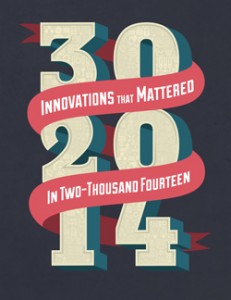 2014 was a year where the Internet of Things and interconnected devices exploded on to the government scene. Seriously. There are now far more device (2-1) connected to the Internet than there are people.
2014 was a year where the Internet of Things and interconnected devices exploded on to the government scene. Seriously. There are now far more device (2-1) connected to the Internet than there are people.
In GovLoop’s new guide, 30 Innovations that Mattered in 2014, we discovered that agencies were just beginning to dip their toes into the world of the Internet of Things.
Though the term and the technology have actually been around for decades, this year many government agencies started to pilot IoT programs and see what efficiencies and outcomes they could receive from sensors that collect data, connected devices, and more.
To get a handle on this technology and see what exactly it might mean for government in the coming years, we sat down with Larry Payne, Vice President U.S. Federal, Cisco, to talk about the Internet of Everything.
Payne said that before discussing possible uses cases, it’s important to define and understand the terms of what this game-changing technology involves. “The Internet of Things is connecting machines to machines, so sensors into computers,” Payne explained. “When we look at the Internet of Everything, it’s certainly encompasses machine to machine connection, but also the human aspect. So it connects machine to machine, but also machine to people, and it incorporates the process in order to leverage those connections appropriately.”
Payne predicted that the Internet of Everything is set to truly start making a difference in government in 2015.
“We’ll see the adoption of this Internet of Everything technology move rapidly next year within the federal government,” predicted Payne. “Many use cases now are starting to come to life. Certainly some of the things you’re seeing like iWatch or Fitbits are starting to gain acceptance in the market. So we really feel like it’s gone from being something that is interesting, that captures people’s imagination, and now it’s starting to become a reality in a lot a different areas.”
The Department of Defense is one agency that is truly starting to experiment with the advantages of connected technology. Payne explained that net-centric warfare and connecting the tactile edge to the enterprise are becoming a real opportunity for the DoD. For example, think about sensors on soldiers for the dismounted soldier. With the Internet of Everything, you could potentially connect video from a soldier back to a command station so that there’s real time intelligence going on.
“The other thing that we’re seeing is improvements in the logistics area and transportation,” Payne added. “It’s starting to become more common to have sensors on these intelligent vehicles and in the aircraft that gives status in real time so that if there are alarms, if there’s warnings, if there’s low fuel, all this information is already captured so that the turnaround time is quicker, and that’s a huge cost savings for customers.”
For more of our interview with Payne and to uncover the 30 innovations from 2014, download the guide!






Leave a Reply
You must be logged in to post a comment.